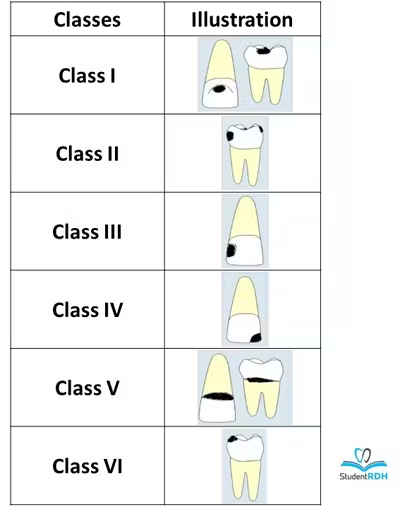OROFACIAL W7 Occlusion + Cavity Classification
1/49
There's no tags or description
Looks like no tags are added yet.
Name | Mastery | Learn | Test | Matching | Spaced |
|---|
No study sessions yet.
50 Terms
What is Occlusion?
Occlusion describes the relationship between the mandibular and maxillary teeth when the teeth are closed together.
What factors contribute to the relationship between teeth and jaws? (3)
eruption pattern
facial development
sequence of tooth bud formation
How does the eruption pattern contribute to proper occlusion?
The development of occlusion begins with the ruption of primary teeth
The eruption schedule has primary teeth take proper position and are also lost at specific times to allow permanent teeth to move into those specific positions.
ex. central incisors come into position anteriot to the lateral incisors because the centrals erupt before the laterals
Why are most anterior teeth erupting before posterior teeth?
Anterior teeth have less bone coverage therefore, their tooth buds form earlier than posterior teeth.
Some posterior teeth are trapped under the ramus of the mandible and must wait for growth to occur in the mandible before they are able to erupt
Which teeth are usually the first to erupt?
primary mand central incisors (followed by primary max central incisors)
At 16 months, primary molars erupt and establish vertical height and intercuspation. Define these 2 terms
Vertical height determines the primary occlusion
Intercuspation is the M-D and B-L relationship that determines how the upper teeth will touch, hit and interlock with lower teeth
Which primary teeth assist in the eruption of the canine and primary 2nd molars to erupt?
Upper primary first molars
At what age is eruption typically complete for all primary teeth?
2.5 y/o
What are the 3 possible anteroposterior (M-D) molar relationships in Primary Occlusion? Describe each.
Mesial Step → primary mand 2M (distal surface) are situated more mesial than max molars
most common relationship
Flush Terimnal Plane → primary mand 2M even with each other on both arches (directly above one another)
Distal Step → primary mand 2M are more distal (posterior) than max molars
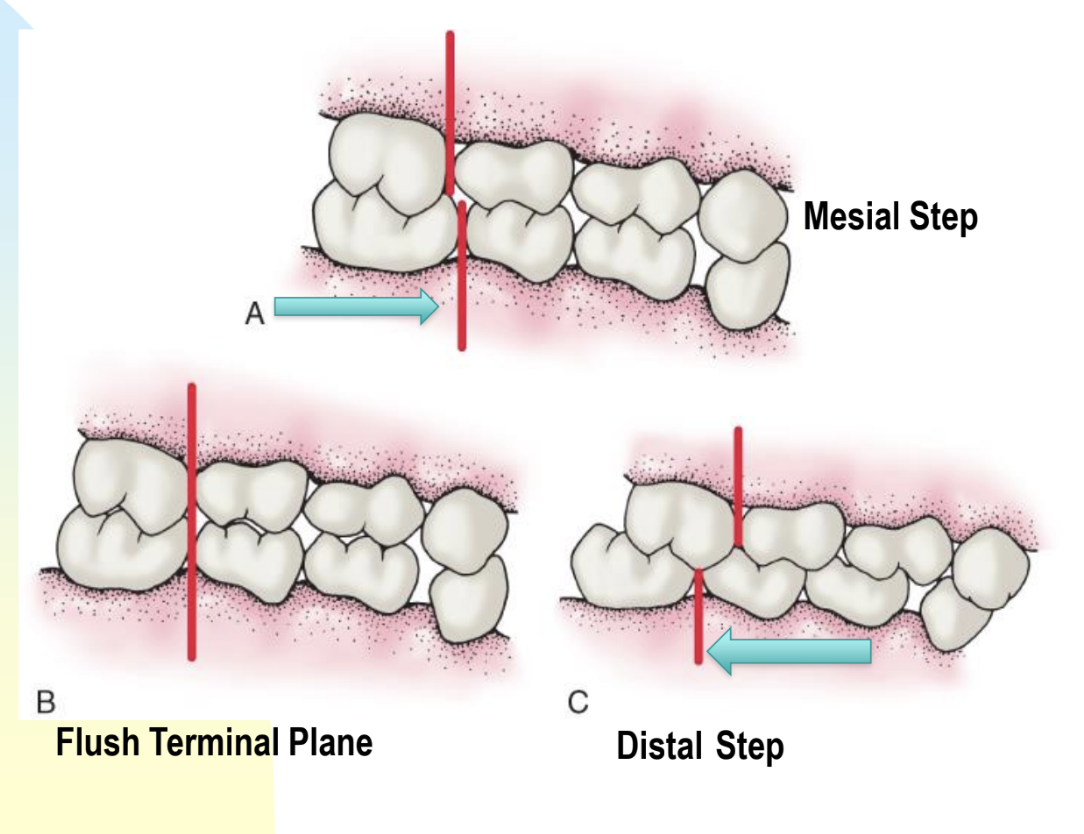
What are primate spaces? Where are they located?
Primate spaces aka largest diastema (teeth gaps) are naturally occuring spaces between primary dentition.
located mesial to max primary canine and distal to mand canines
**these diastemae form because teeth remain the same size as the jaw grows horizontally and vertically
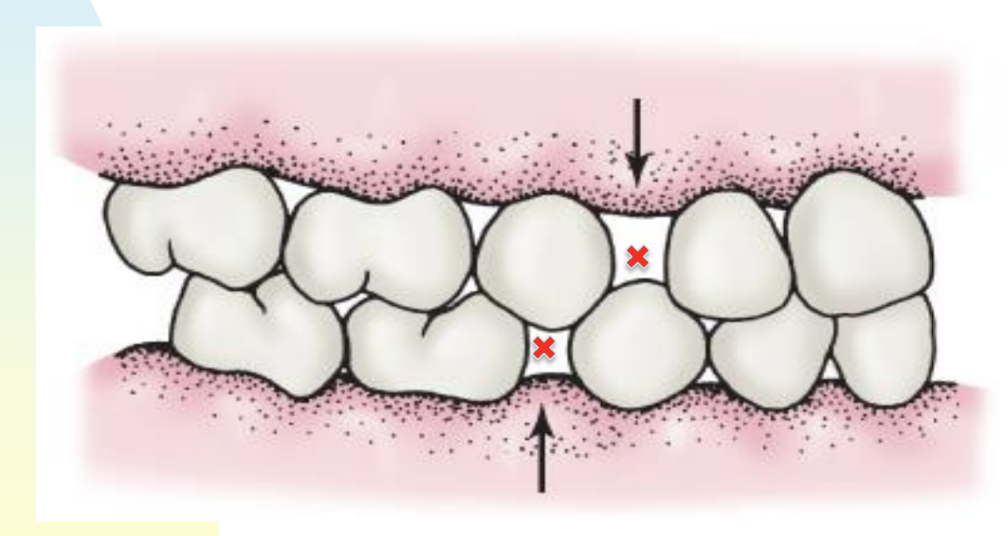
____ is the chain reaction that pushes all of the interproximal spaces to close. The reaction is triggered by _____?
Mesial drift
triggered by eruption of permanent 1M pushing against the primary molars and closing the primary spaces
How is Leeway space created?
Leeway space is the extra space created by the exfoliation of the primary molars and primary canines which are then replaced by narrow-er permanent premolars.
The permanent teeth take up less space leaving the “extra space” leeway space

What are thehereditary factors that influence the development of occlusion? (3)
Congenitally missing teeth
Impacted teeth
Size and shape of muscle and bone
What are 3 controllable factors that can affected occlusal development?
Premature loss of dediduous teeth
Decayed teeth that were not restored
Harmful habits like thumb sucking
Which facial structures are involved in the proper HORIZONTAL alignment of the teeth? (3)
Tongue - acts as an internal force pushing teeth forward towards lips/cheeks
Cheeks - control the teeth from moving too far facially
Facial muscles - help maintain proper alignment of teeth into proper positions once they have erupted
Define Retrusion.
Overdeveloped lower lip due causing lower teeth/jaw to be positioned further back.
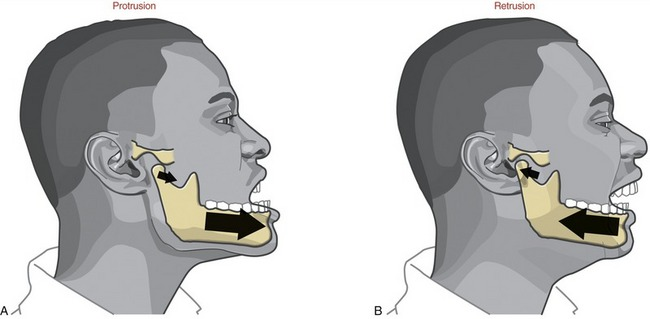
Define Labioversion/Buccobersion.
Malocclusion of the teeth where a tooth is out of alignment towards the labial/buccal direction
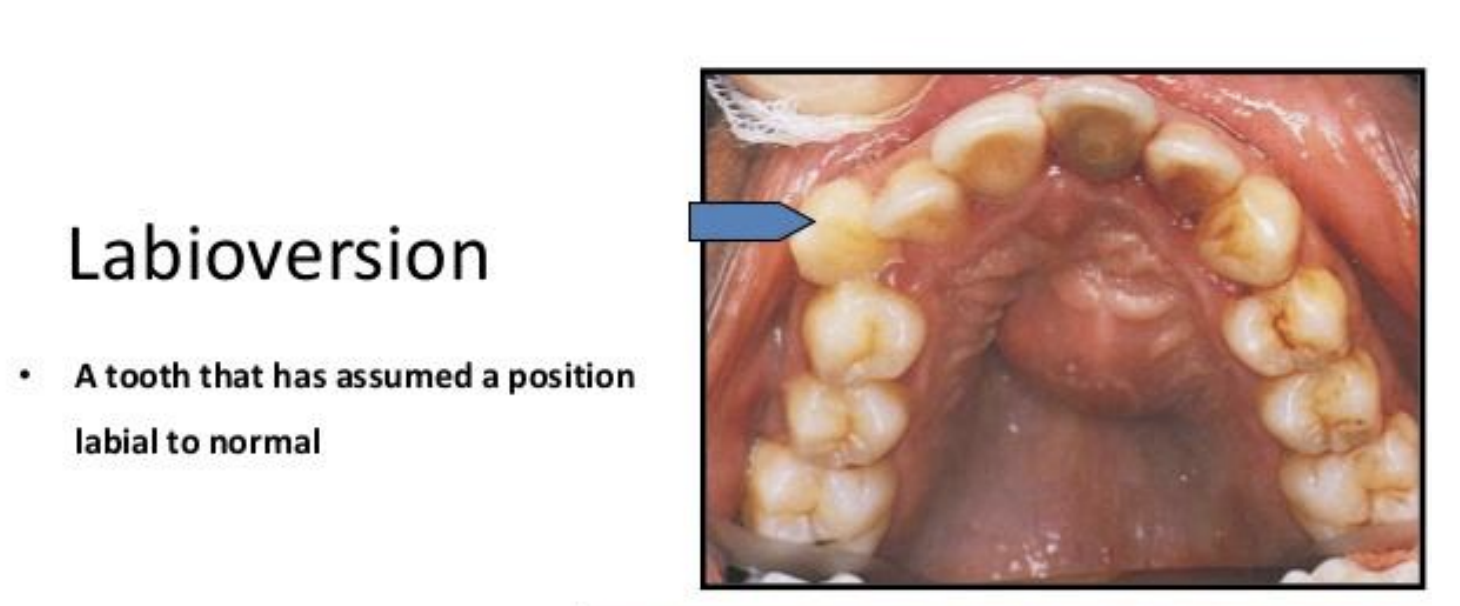
Define Supraeruption
Overerupted tooth that is abnormally long relative to the rest of the occlusal surfaces
Define crossbite
a tooth or teeth that are out of alignment in a bucco/lingoversion
Crossbite can exist between any number of teeth (even just 1)
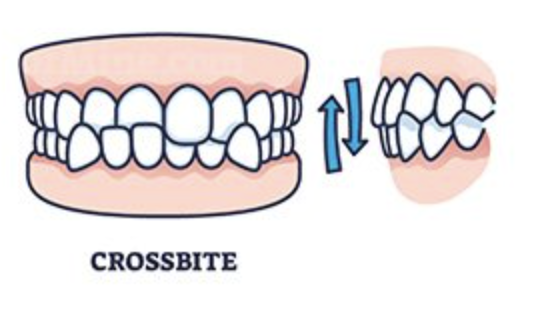
Define edge to edge malocclusion
Edge to edge is when the max incisal edges line up with the touching mand incisal edges with NO vertical overlap
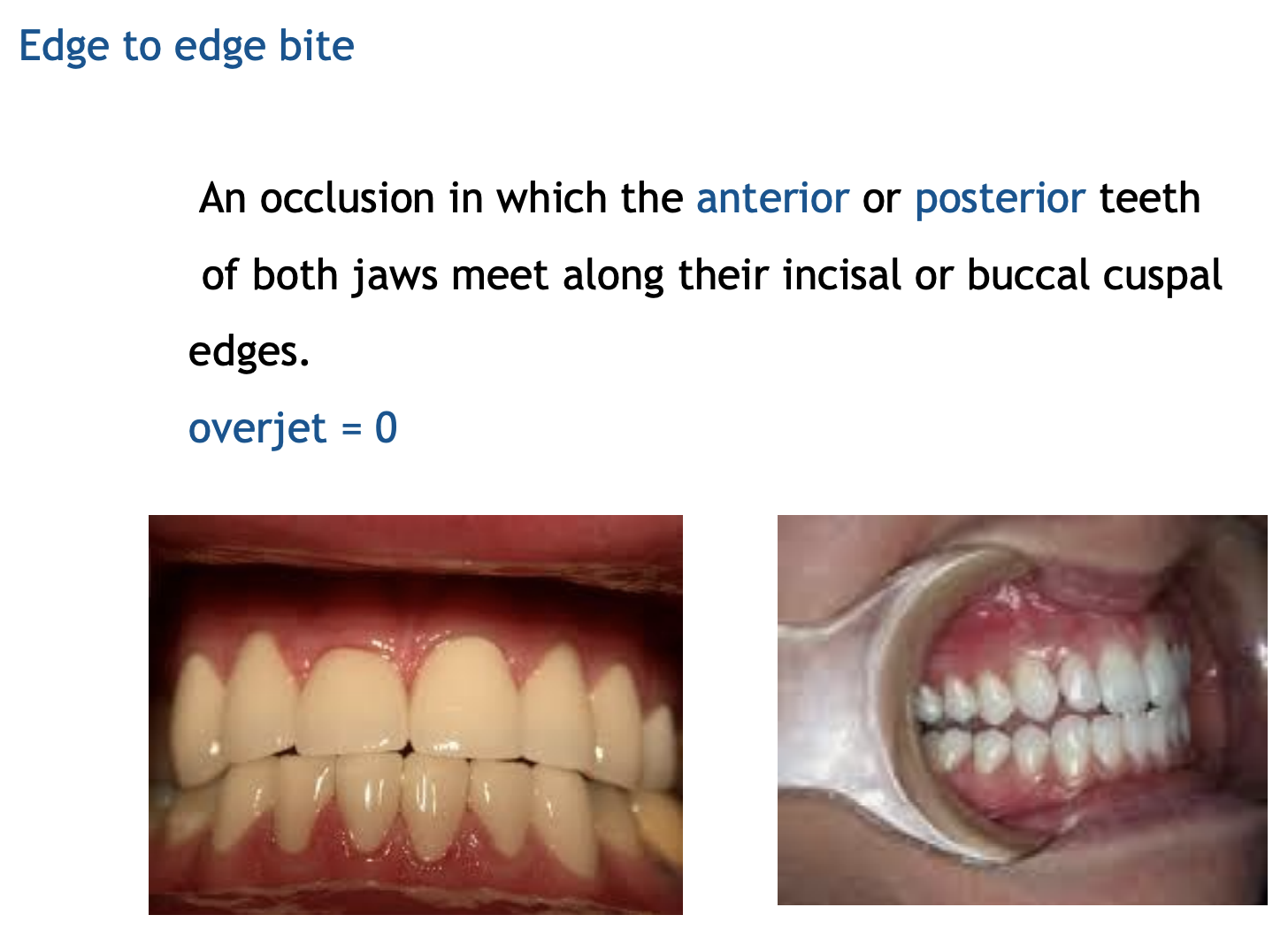
Abnormal thrusting of the tongue against the anterior teeth causes ____?
Open bite → max anterior teeth protrude labially
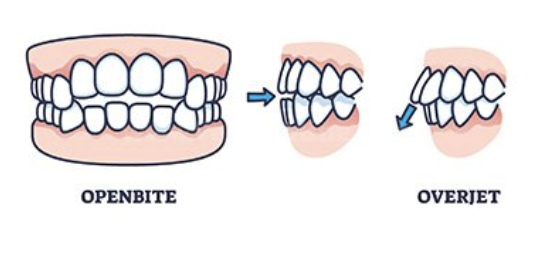
The constant tightening of the lower lip against the lower anterior teeth can cause what kind of horizontal misalignment?
Retrusion of the lower teeth
What prevents tooth deviation in the buccal or lingual direction?
Intercuspation → interlocking of the max and mand teeth between the buccal and lingual cusps of the max and buccal cusps of the mand.
Compare and contrast the curve of Spee and Wilson’s curve.
Curve of Spee → front-to-back curve of the teeth (side view).
Curve of Wilson → side-to-side curve of the teeth (front view).
Spee = length curve,
Wilson = width curve.
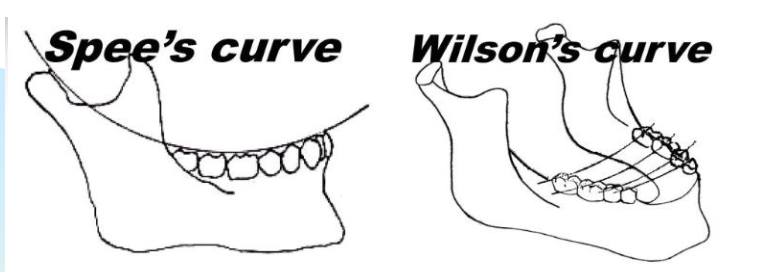
The vertical alignment of the mandibular posterior teeth:
Crowns tipped lingually
Roots tipped laterally → towards the tongue
*note that teeth are not straight up and down
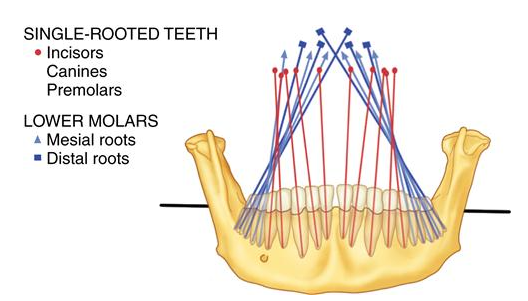
The vertical alignment of maxillary posterior teeth:
Crowns have a slight buccal inclination
Roots have a slight lingual inclination → tipped towards cheek
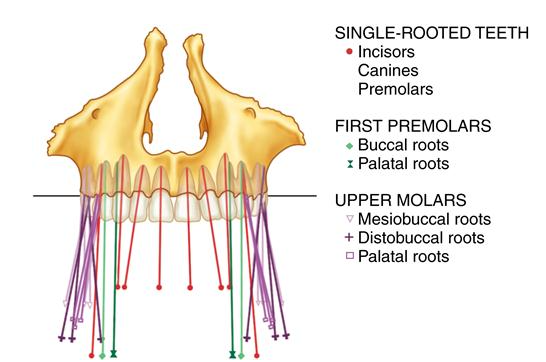
From the lateral view, all teeth show slight mesial inclination except…?
maxillary 3rd molars 18,28 that are straight up and down.

Which teeth show slight labial protrusion of their crowns with the roots inclining laterally?
Anterior teeth - tip out to the side and towards the front.
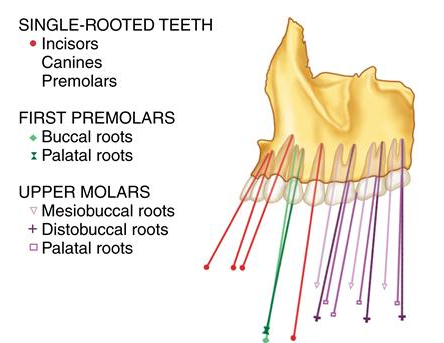
What are the 2 possible relationships when the jaws are closed?
Centric relation → relationship between the upper jaw and lower jaw
condyles of TMJ are in their most upward and backward position.
Centric occlusion → relationship between the maxillary teeth and mandibular teeth
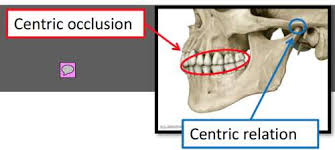
Centric relation is determined by the …?
maximum contraction of the muscles of the jaw
It is the relationship of the mandible to the maxillae where healthy muscles and joint anatomy can comfortably guide the mandible if there were no teeth
Which relationships of the closed jaw is used for constructing dentures?
Centric relation
Define Centric occlusion. How is centric occlusion determined?
Centric occlusion is the habitual way the teeth come together when closing their jaw.
it is the jaw position that affords the greatest interdigitation of the teeth (most teeth touching)
Centric occlusion is determined by the way teeth fit together.
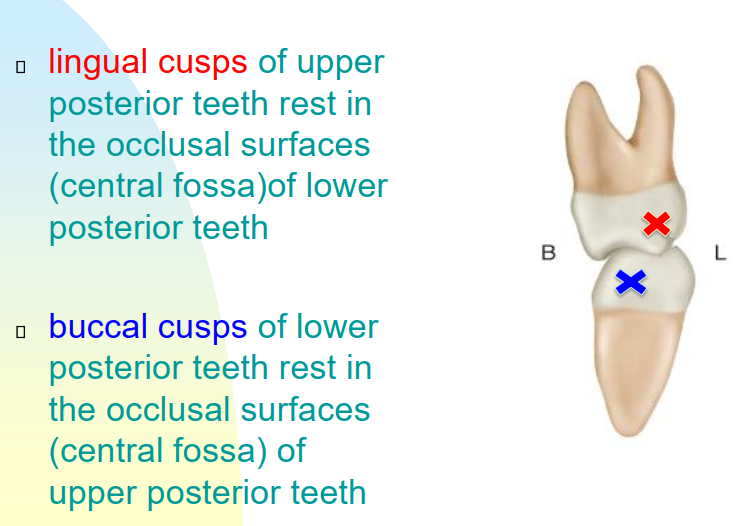
Define Occlusion-overjet.
The amount of facial horizontal overlap of the maxillary teeth.
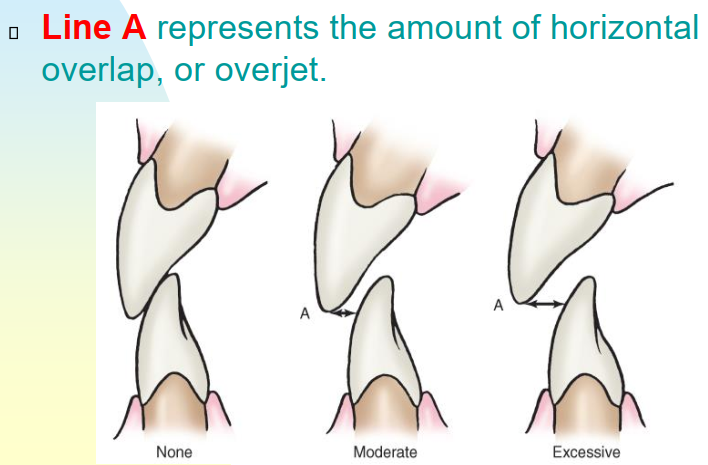
Define Occlusion-overbite.
The amount of vertical overlap between teeth.
how far max anterior overlaps the mand anterior
Overbite average is 25%
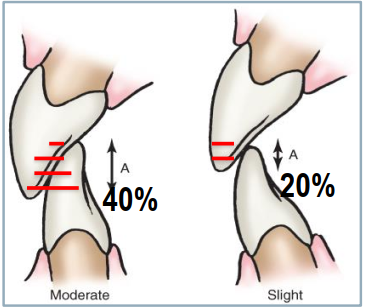
Define Acromegaly. What is the cause?
Acromegal is a condition where a crossbite of ALL the mandibular teeth occur.
Cause: growth hormone causing mand to grow faster than max.
What are the 2 basic classifications of occlusion? What are each classifications based on?
Skeletal - based on relationship between bone of maxilla to bone of the mand
Dental - based on the relationship between teeth of the mand to the teeth in the max.
Define the 3 Classes in Skeletal Classification of Occlusion.
Class 1 - maxilla and mandible are in normal relationship to each other → neutroclusion
Class 2 - the mand is retruded (distal relationship with maxilla) → retrognathic
Class 3 - The mand is protruded (mesial relationship with the max) → prognathic
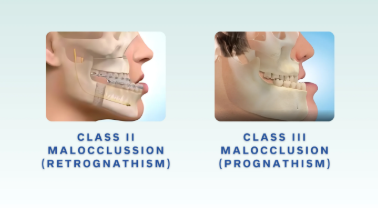
What is the most popular occlusal classification system. What is it based on, and who created it?
EH Angle’s classification system (dental classification)
Created by Dr Edward Angle in 1887
based primary on the relationship between permanent 1M to each other and the relationship of the permanent canines to each other.
note: it is possible for classifications to be different on different sides of the mouth.

Angle’s Classification of Occlusion.
Class I (Normal / Neutroclusion)
Upper 1st molar’s mesiobuccal cusp fits into lower 1st molar’s mesiobuccal groove.
Bite is normal, but crowding/spacing may exist.
Class II (Distocclusion)
buccal groove of mand 1M is posterior to MB cusp of max 1M
Upper teeth stick out (overjet).
Has 2 divisions:
Div 1: Class 2 1M but max central incisors are normal
Div 2: Class 2 1M and max central incosrs are retruded and inclined lingually
Class III (Mesiocclusion)
buccal groove of mand 1M is more anterior to the MB cusp of max 1M
Underbite appearance.
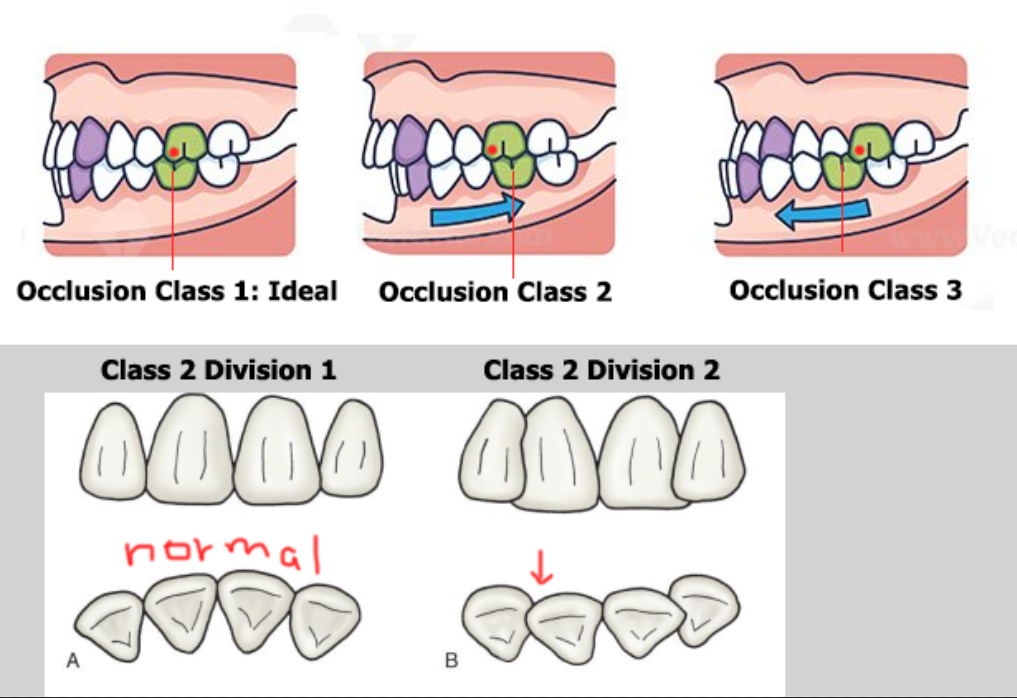
What are 4 causes for Class 2 Division 2 Occlusion?
a deep overbite
crowding of maxillary anteriors
normal overjet
excessive masseter muscle development
What class would a client be if they are missing a tooth in any quadrant causing their 1M to be in misalignment. How would we determine the class?
The client would be Class 1 if the rest of their teeth are in the correct alignment for Class 1.
use anterior teeth to help determine the class.
What is Lateral mandibular Glide?
aka Lateral excursion = mandible moves left or right.
Working side = the side the mandible moves toward; teeth are in contact
Non-working side = the opposite side; no teeth are in contact
Purpose = part of normal mastication (chewing movements).
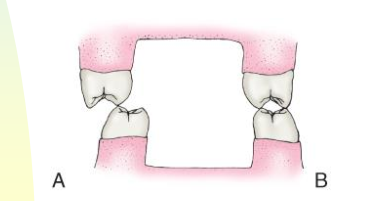
Which teeth carry the bulk of the contact during lateral mandibular glide. What is this called?
the canines → Canine Rise
canines are the main teeth that guide the jaw in lateral excursion
Premolars sometimes occlude during lateral excursion aka group function
a few pairs of other interlocking cusps of other teeth do make occlusal contact
Canine rise = as mand canine opens and glides down the lingual surface of the max canine
Describe protrusion movement of the mandible. Which teeth are touching?
When mandible moves forward from centric occlusion.
Only teeth touching are the 4 anterior teeth (possibly canines)
NO POSTERIOR TEETH TOUCH
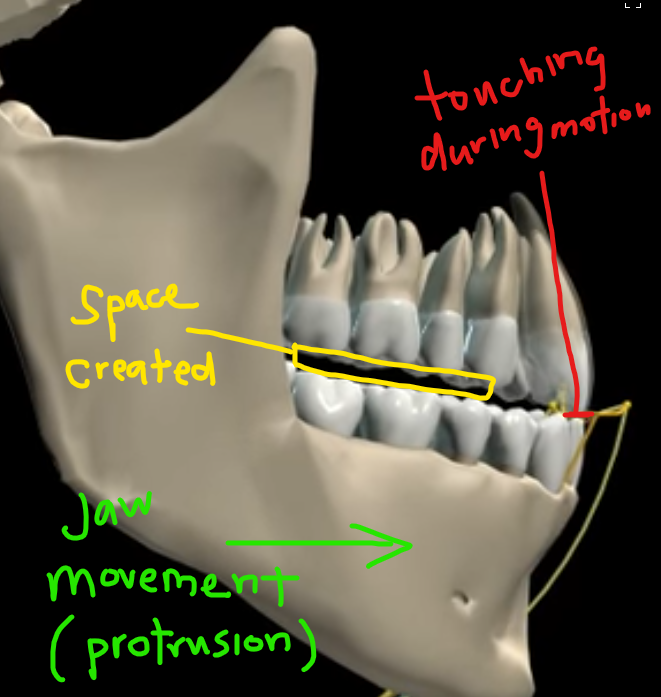
When the jaw closes, all posterior teeth contact each other at the same time. What is it called when teeth touch earlier than others as the jaw is closing? Why is this an issue?
Premature contact
Problem:
inference with normal motion of jaw closure
Bears more force than other teeth becoming a premature contact area
What are 4 conditions that can arise from premature contact of the posterior teeth?
Damage to ligaments and muscles of TMJ
Tired, sore and tender muscles
Tooth hitting prematurely can become sensitive, cracked or broken
Periodontitis → mobility and widening of the PDL on an xray
What are the features of Class 1 occlusion that make it the most ideal occlusion for permanent dentition?
Condyles in most favourable location
Face and jaw muscles balanced
Stable and interlocked occlusion
Slight curve of spee
No spaces between teeth
No rotated teeth
All crowns tipped mesially
Incisors flair labially, posterior teeth flair lingually
Describe what happens to the incisors for Class 2 Division 2 and Class 3 malocclusion.
Class 2 Div 2 = incisal wear causing exposure and death of the tooth pulp
Class 3 = incisal wear causing pulp exposure
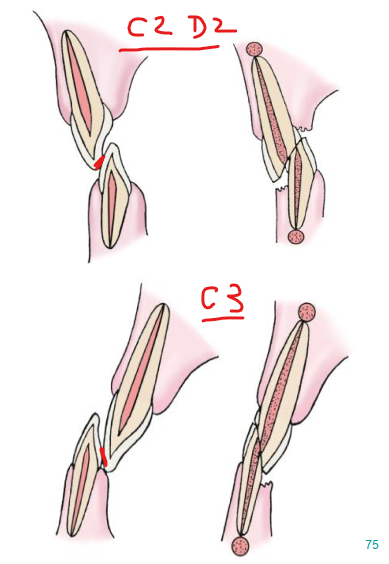
What are Stolarized Molars?
In permanent teeth, stolarized molars = when the upper 1M’s distal marginal ridge touches the mesial marginal ridge of the lower 2M AND middle of the mand 1M
This is not normal — it shows a malocclusion.
Usually points toward a Class II tendency (lower molar sitting too far back).
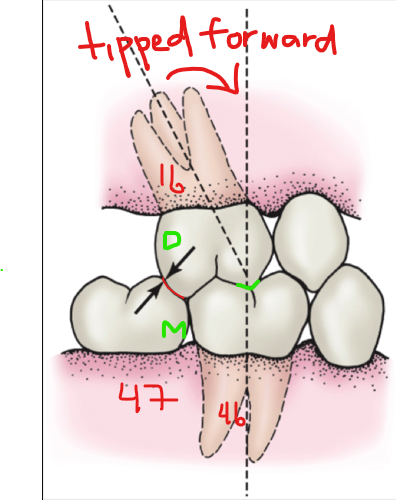
What are the 6 Classes of Black’s classification of Cavities.
Class I – Pits and fissures
occlusal surfaces of molars/premolars
lingual of anteriors
buccal/lingual of molars.
Class II – Proximal surfaces of posterior teeth (molars/premolars).
Class III – Proximal surfaces of anterior teeth, without incisal edge involvement.
Class IV – Proximal surfaces of anterior teeth, with incisal edge involvement.
Class V – Gingival third of facial or lingual surfaces (any tooth).
Class VI – Cusp tips of posteriors or incisal edges of anteriors.
quick memory:
I = pits/fissures
II = posterior proximals,
III = anterior proximals (no incisal),
IV = anterior proximals (with incisal),
V = cervical third.
VI = cusp tips/incisal edges.
